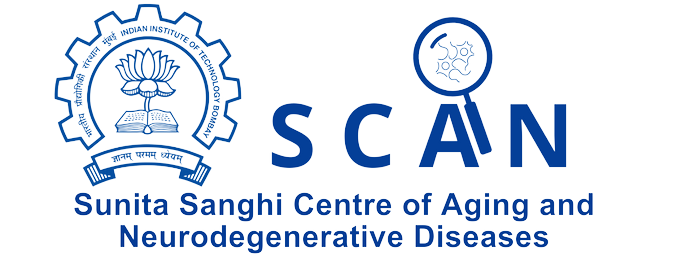Understanding Parkinson’s Disease:
A Beginner’s Guide

Introduction
Parkinson’s disease (PD) is a chronic and growing neurological disease that impacts movement control. It is the next most prevalent neurodegenerative disease following Alzheimer’s disease.
In India, the prevalence of PD is at surge, making it crucial to spread awareness and understanding of the disease. Moreover, early diagnosis and care can substantially enhance the quality of life of affected individuals. This introductory guide aims to provide an understanding of PD, covering its symptoms, diagnosis, causes and treatment options along with tips for living with the condition. Individuals, families, and caregivers can better manage the challenges associated with the disease by understanding the nature of Parkinson’s disease.

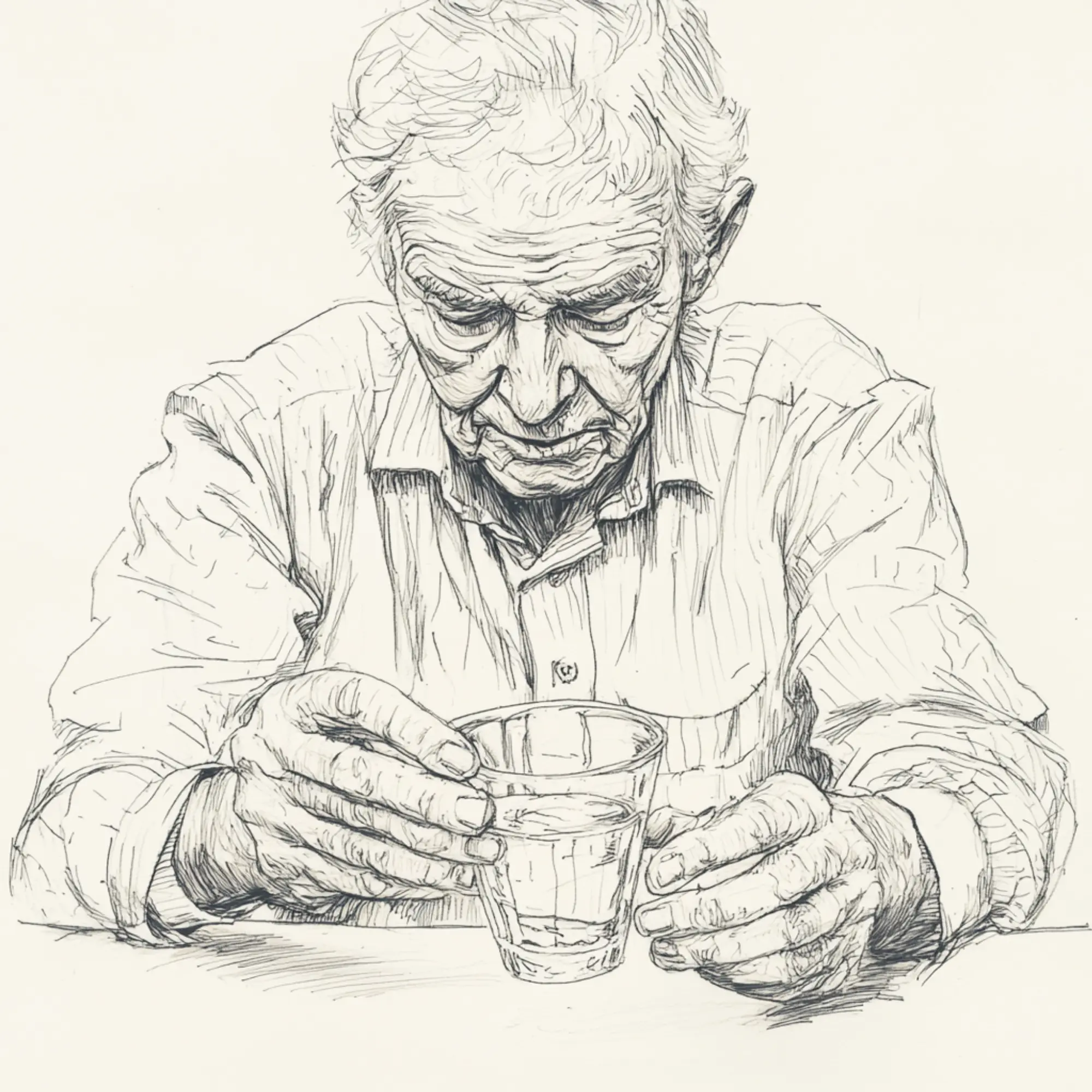
What is Parkinson’s Disease?
Parkinson’s disease is a neurodegenerative disorder that primarily affects movement. It develops gradually, sometimes beginning with a tremor in a single hand that is barely noticeable. However, while tremors are common, the disorder can cause stiffness, walking difficulties, etc.
The Role of Dopamine
When specific nerve cells (neurons) in the brain gradually degenerate or die, Parkinson’s disease results. The loss of neurons that make the neurotransmitter dopamine is the cause of many of the symptoms. Dopamine acts as a chemical messenger between brain cells to coordinate smooth and balanced muscle movement. Reduced dopamine causes aberrant brain activity, which impairs movement and results in other Parkinson’s disease symptoms.

What is Neurodegeneration?
The progressive loss of dopamine-producing neurons’ structure or function, including their death, is referred to as neurodegeneration. In Parkinson’s Disease, neurodegeneration primarily affects a region of the brain called the substantia nigra, that plays an important role in movement.
As neurodegeneration progresses, symptoms of Parkinson’s Disease emerge and worsen over time. (The details of early and major symptoms of PD are discussed in the following sections). One of the major causes of neurodegeneration is the presence of Lewy bodies, (clumps of protein such as α-synuclein) in the brain cells. These clumps cause the death of dopamine-producing neurons and disrupt normal brain functions.
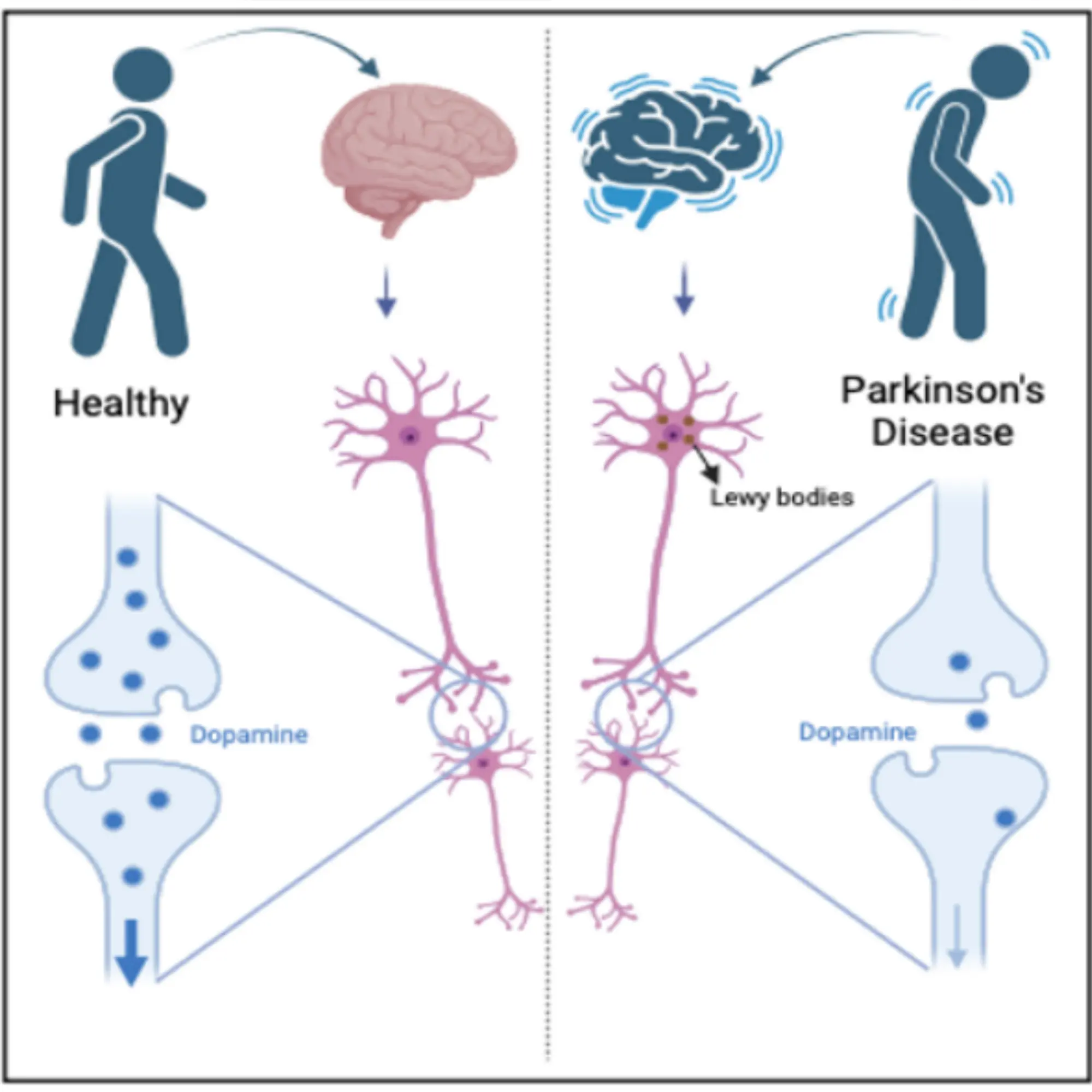

Parkinson’s Disease in India
Parkinson’s disease is increasingly recognized as a significant public health concern in India. The recent improvements in the healthcare sector have resulted in a remarkable increase in life expectancy and a proportional increase in PD cases in India. This trend is expected to continue in the coming decades. It is estimated that 10–15 lakh people in India suffer from Parkinson’s disease, with higher rates observed in older populations. Parkinson’s disease is predicted to impact more people as India’s population ages; thus, addressing the issues this condition presents is crucial. Therefore, understanding the prevalence and demographic distribution of Parkinson’s disease in India is vital for resource allocation and public health planning.
Here are some demographic factors influencing PD:
Demographic Factors
- Age: The incidence rate of Parkinson’s disease in India is estimated to be 4 to 20 per 100,000 people annually. The incidence is more likely in adults over the age of 60, while early-onset Parkinson’s might develop in people under 50.
- Gender distribution: Studies suggest that Parkinson’s disease may be slightly more common in men than women in India, though the reasons for this disparity are not fully understood.
- Geographic Variation: Parkinson’s disease appears to be more common in southern India compared to northern regions. This variation may be influenced by genetic, environmental, and lifestyle factors, with significant variations between urban and rural areas.
- Crude DALY for Parkinson’s disease measures the total years lost to disability and premature death from the illness per 100,000 people, without adjusting for age, reflecting its raw impact on a population. In India, these rates range from 34 in Jharkhand to 88 in Goa, revealing significant variation in disease burden across states. Regions with higher rates face greater combined challenges of disability and early death, highlighting the need for targeted healthcare strategies and resource allocation to address the disproportionate impact of Parkinson’s disease.
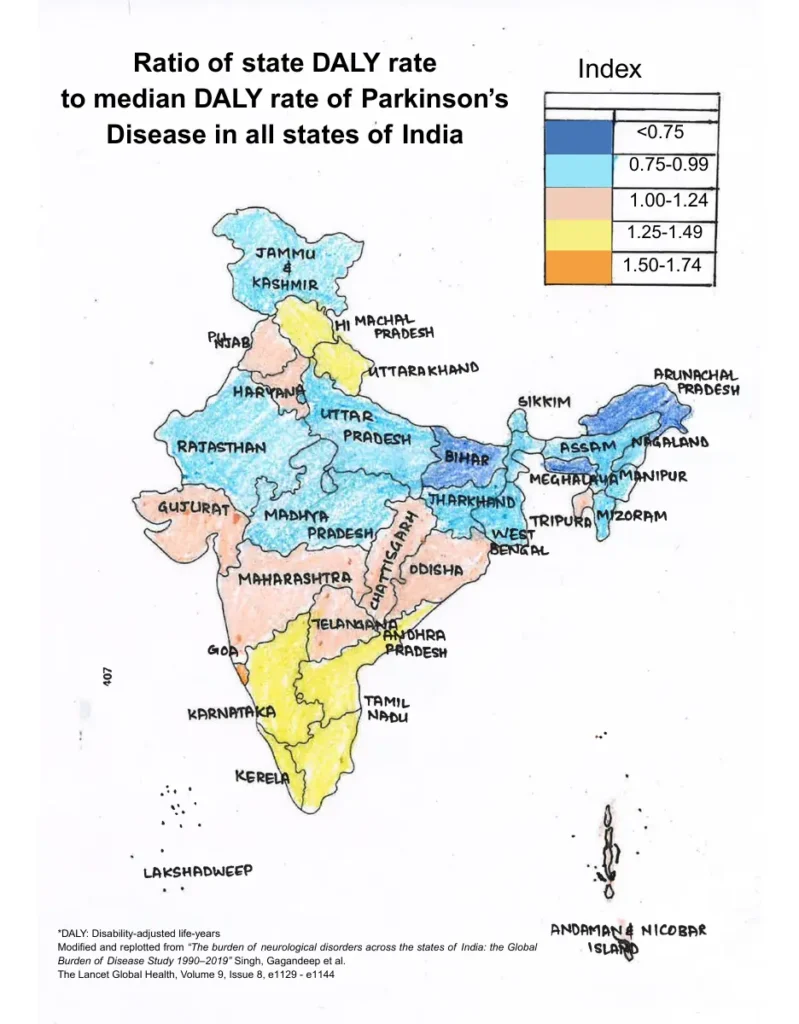

Early Signs and Symptoms
Symptoms of PD can differ from person to person. Early symptoms could be subtle and undetectable, while advanced symptoms become increasingly debilitating. Symptoms are broadly categorized into motor and non-motor symptoms. The key characteristics of early signs and symptoms of PD are listed below:
Prodromal Signs (before the early stage of PD)
Prodromal symptoms of PD may be subtle and often mistaken for signs of normal aging. This occurs before the early stage of PD. Recognizing these warning signs can lead to early diagnosis and better disease management.
- Loss of Smell: Anosmia, or a decreased or absent sense of smell, can occur years before motor symptoms.
- Constipation: Difficulty with bowel movements is a common early sign of Parkinson’s and can occur long before motor symptoms.
- Masked Face: Reduced facial expressiveness may make a person look serious or unengaged. Micrographia: A change in handwriting characterized by smaller, cramped letters.
Rapid eye movement sleeping disorder (RBD): It is an early indicator for the beginning of PD pathology. Most idiopathic RBD patients will eventually develop PD.
Mr. Sharma, a 55-year-old resident of Mumbai, initially thought that stress was the cause of the small tremor in his right hand. Over the next few months, he found that his handwriting had become smaller and more difficult to read. He also experienced constipation long back, which he thought was due to dietary habits. When Mr. Sharma’s wife noticed that his facial expressions seemed unusually stiff and he had difficulty starting his morning walk, they decided to consult a neurologist. After a thorough examination and considering his symptoms, Mr. Sharma was diagnosed with early- stage PD. Early diagnosis allowed Mr. Sharma to begin treatment promptly, helping him manage his symptoms and improve his quality of life.
Disclaimer: This example is just for understanding purposes
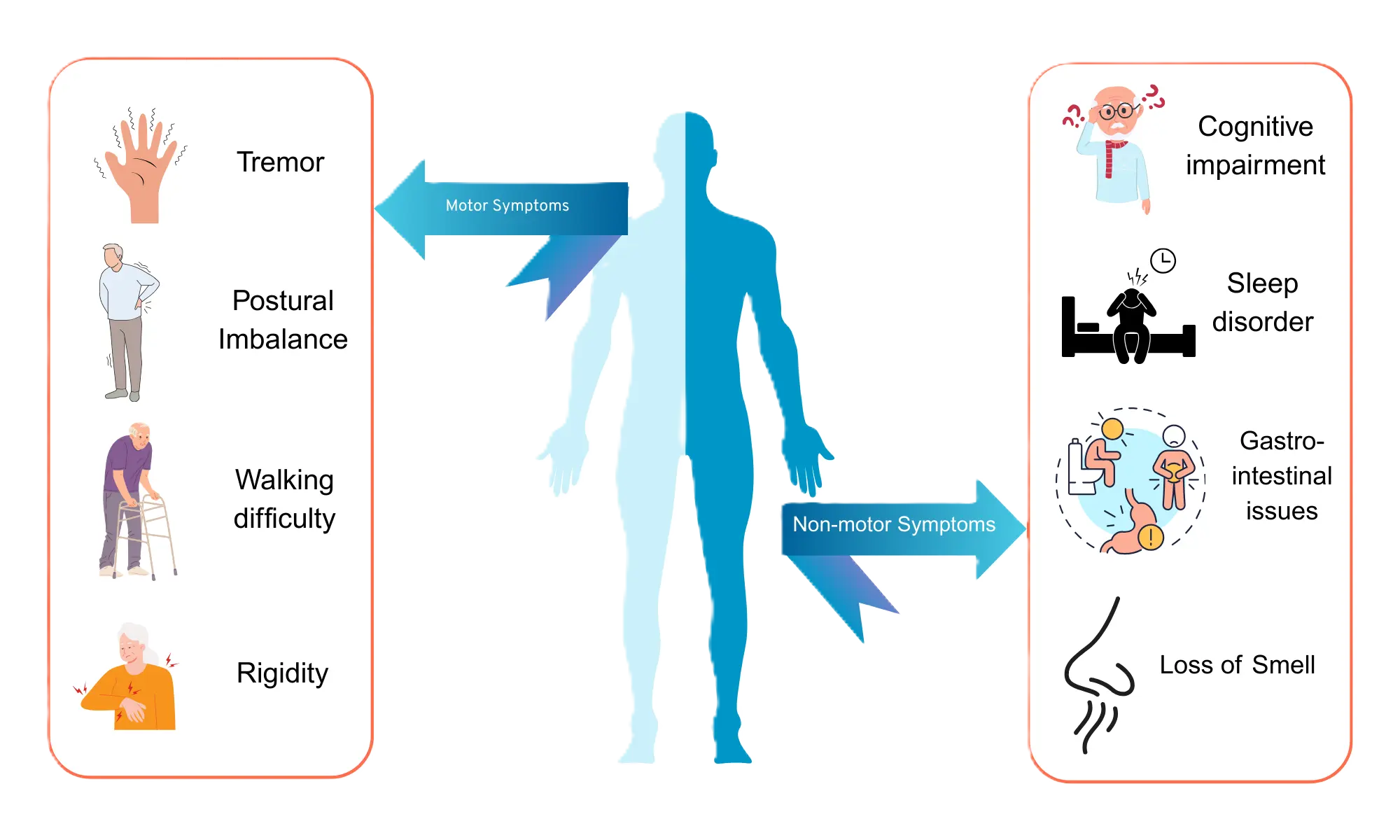
Motor Symptoms
- Tremors: Uncontrollably trembling, usually beginning in the fingers or hands. Parkinson’s disease is characterized by tremors that can happen while you’re at rest.
- Bradykinesia (Slowed Movement): A noticeable slowing of movement that can make simple tasks difficult and time-consuming. This symptom can manifest in reduced arm swing while walking.
- Muscle Rigidity: It refers to limb and trunk stiffness that can limit range of motion and cause pain.
- Postural Instability: Balance problems and a tendency to fall easily, especially in the PD’s later stages.
- Gait Changes: Shuffling steps, difficulty starting or stopping walking, and reduced arm swing while walking.
Non-Motor Symptoms
- Cognitive Changes: Cognitive decline, including issues with memory, attention, and executive functioning, can result from Parkinson’s disease. Some patients may progress to Parkinson’s Disease dementia.
- Difficulty in speech: Changes or difficulty in speaking or swallowing, which can occur at any stage but typically worsen as the disease advances.
- Difficulty in swallowing: Changes in speech and swallowing often happen simultaneously in Parkinson’s disease.
- Mood Disorders: Anxiety, apathy and depression are usual in Parkinson’s Disease, significantly impacting quality of life. Patients treated with dopaminergic drugs often experience Parkinson’s disease psychosis (PDP) which is linked to a high rate of morbidity and death.
- Sleep Disturbances: Parkinson’s patients often experience sleep issues, such as insomnia, and restless legs syndrome.
- Autonomic Dysfunction: Problems with automatic body functions, such as bowel and bladder control, blood pressure, and temperature regulation.
